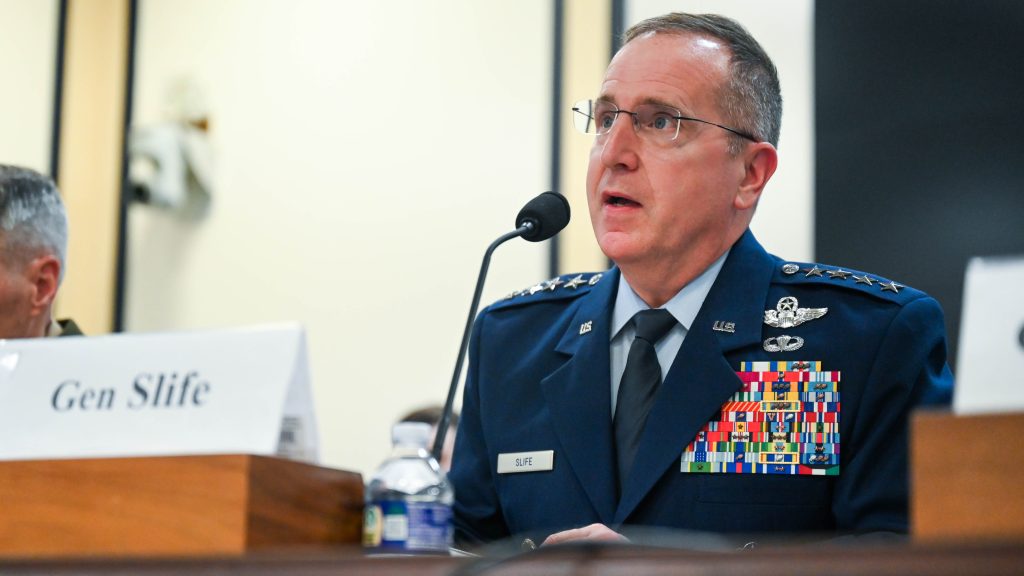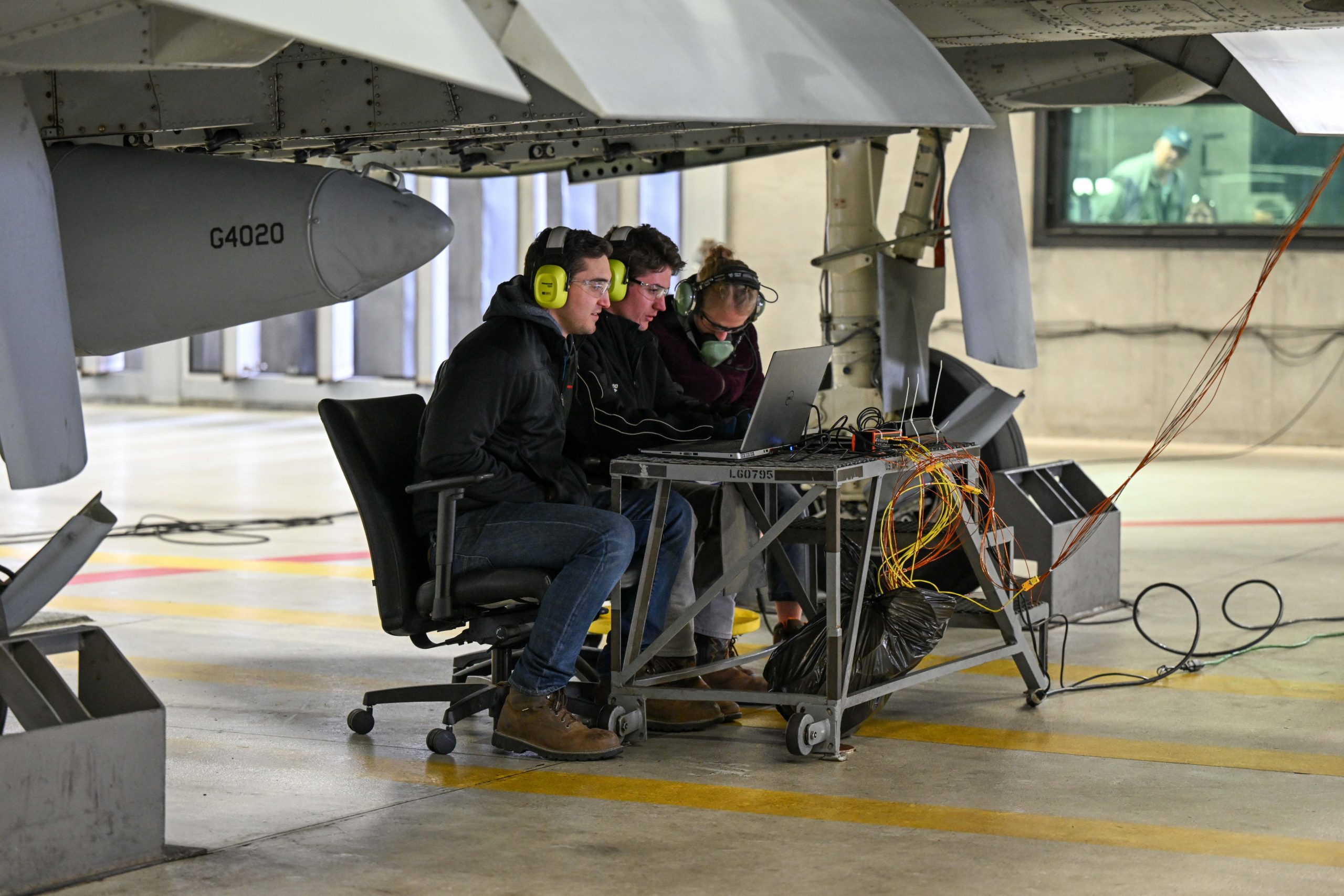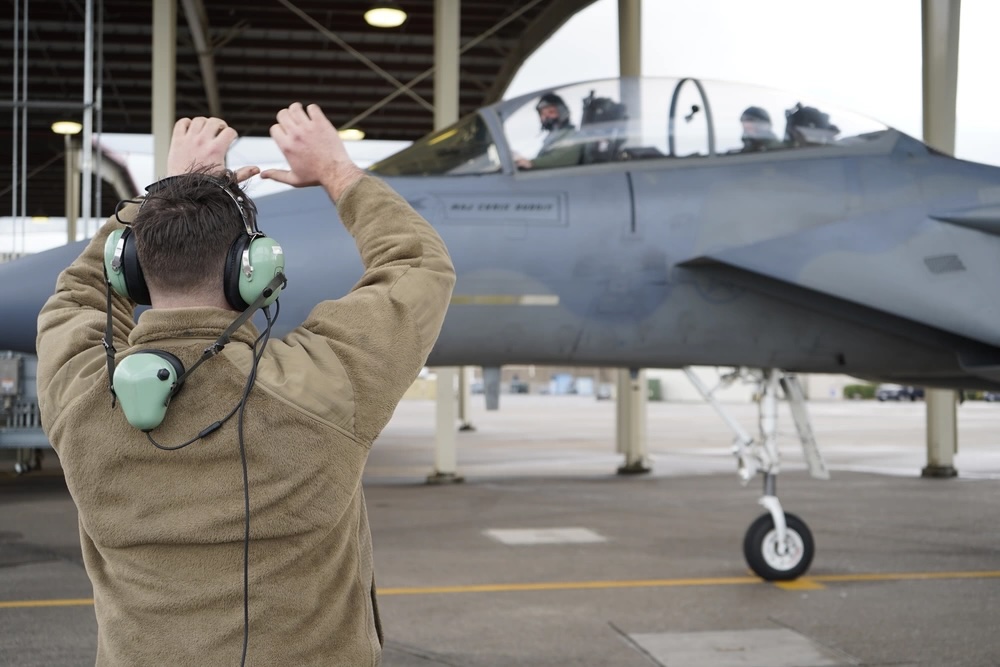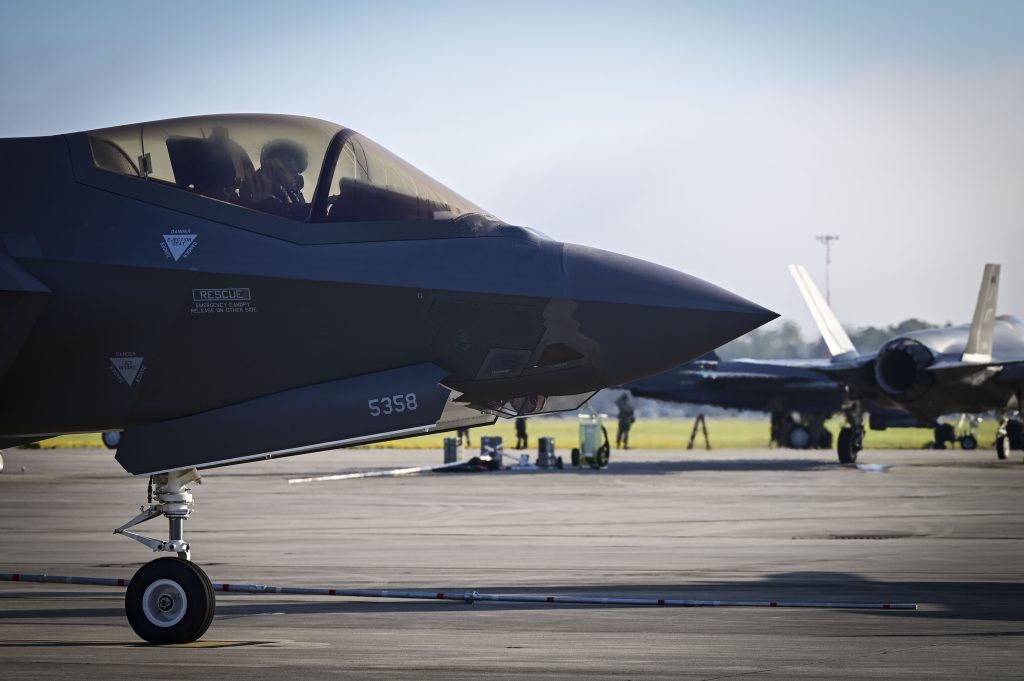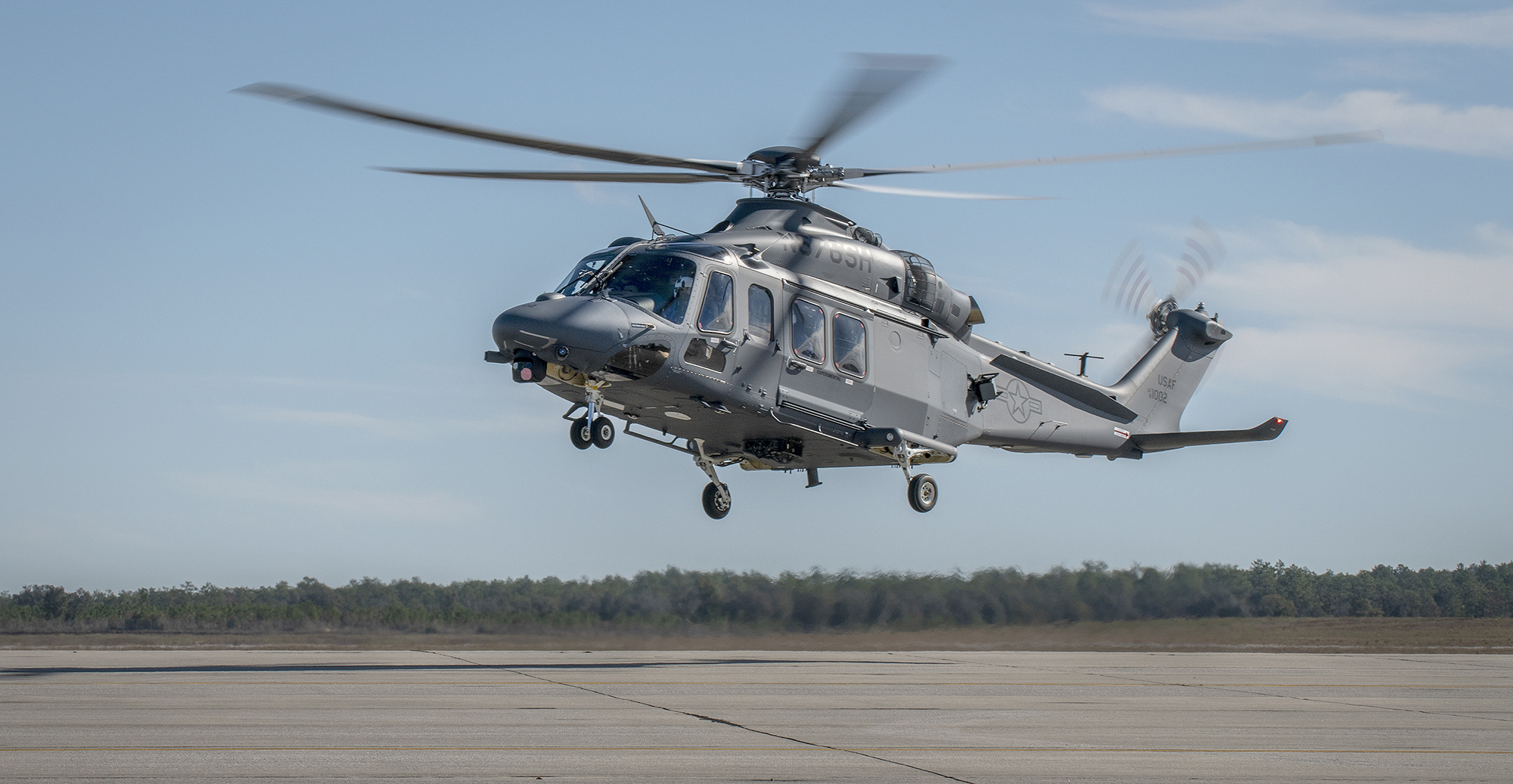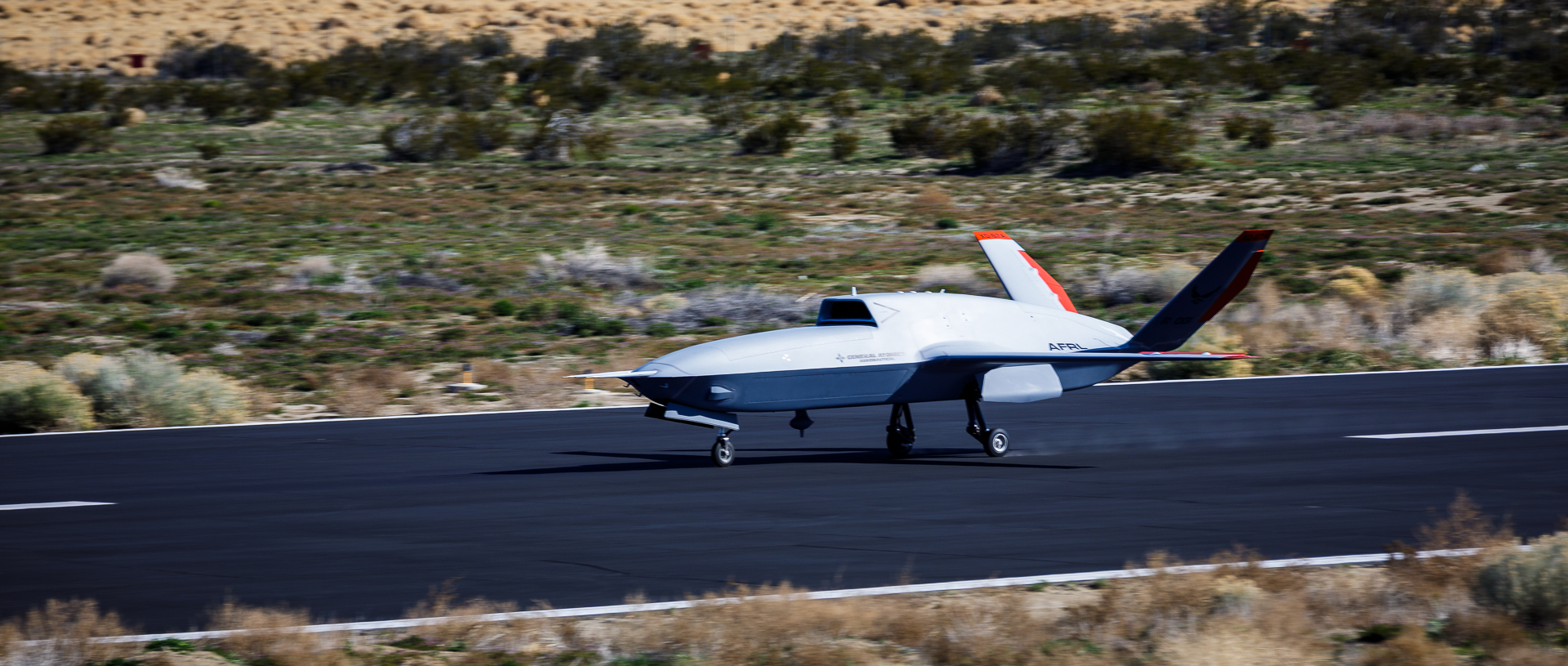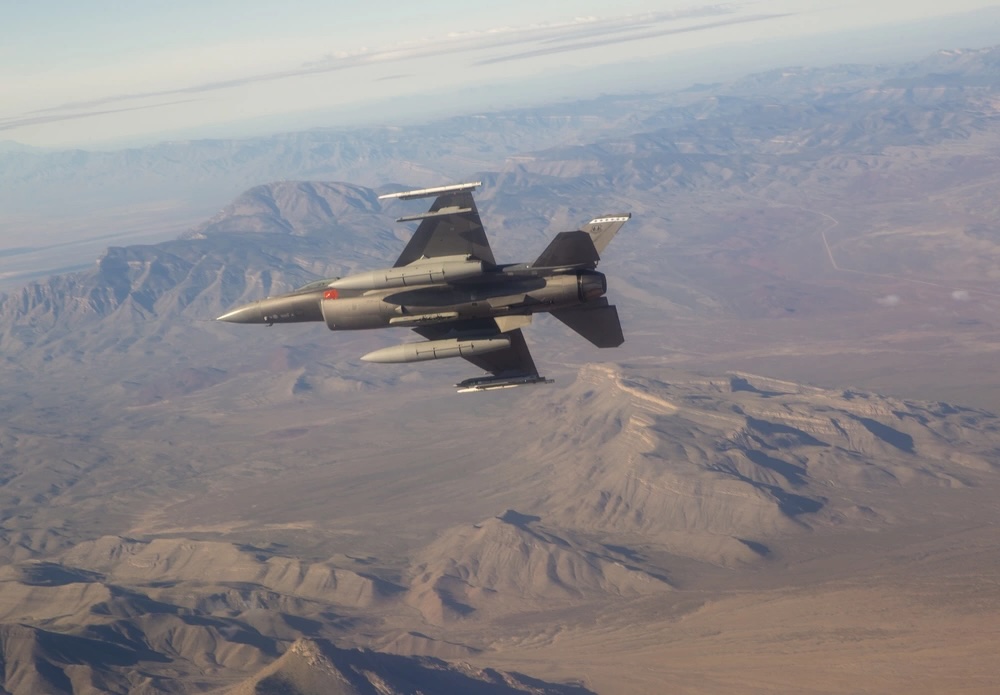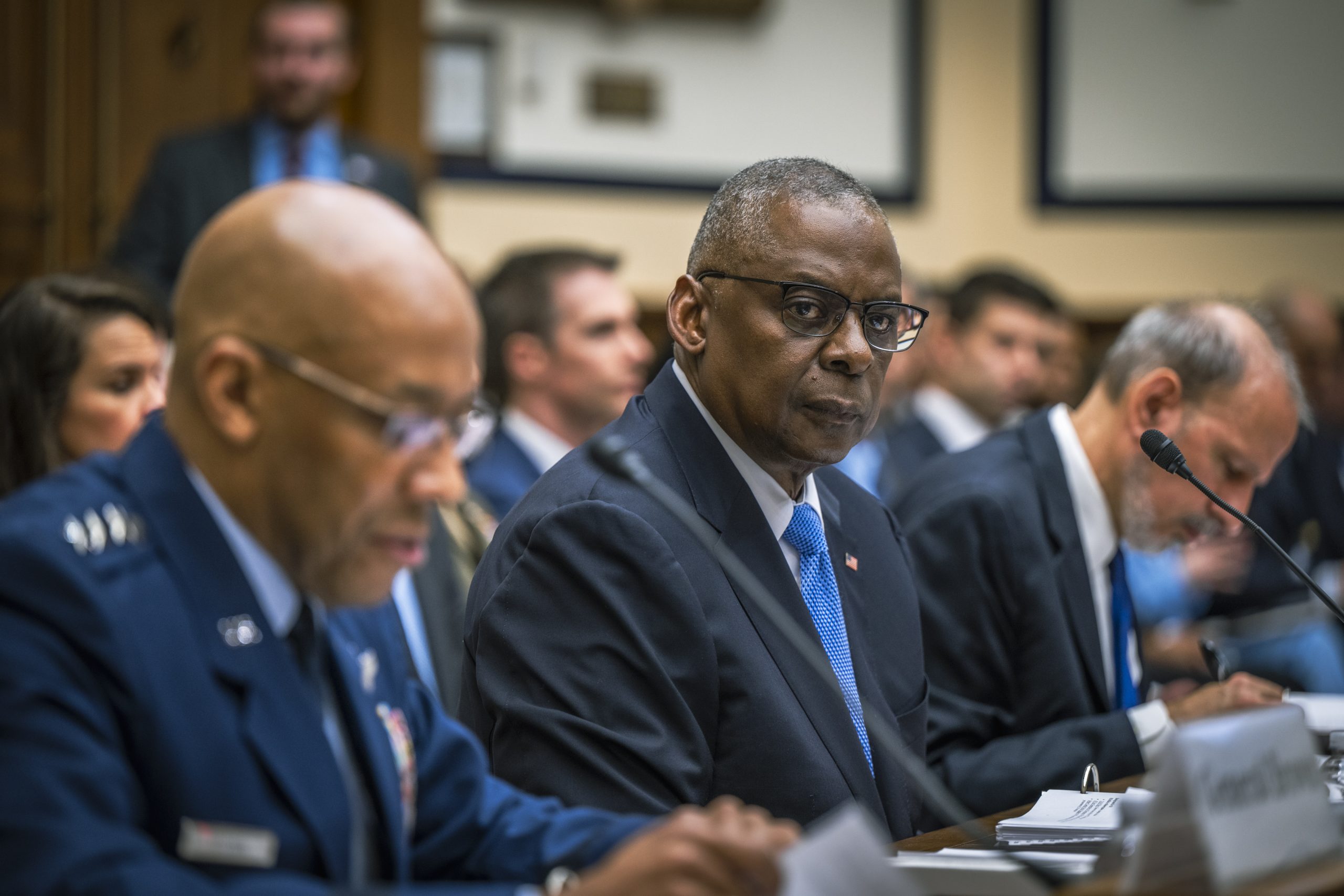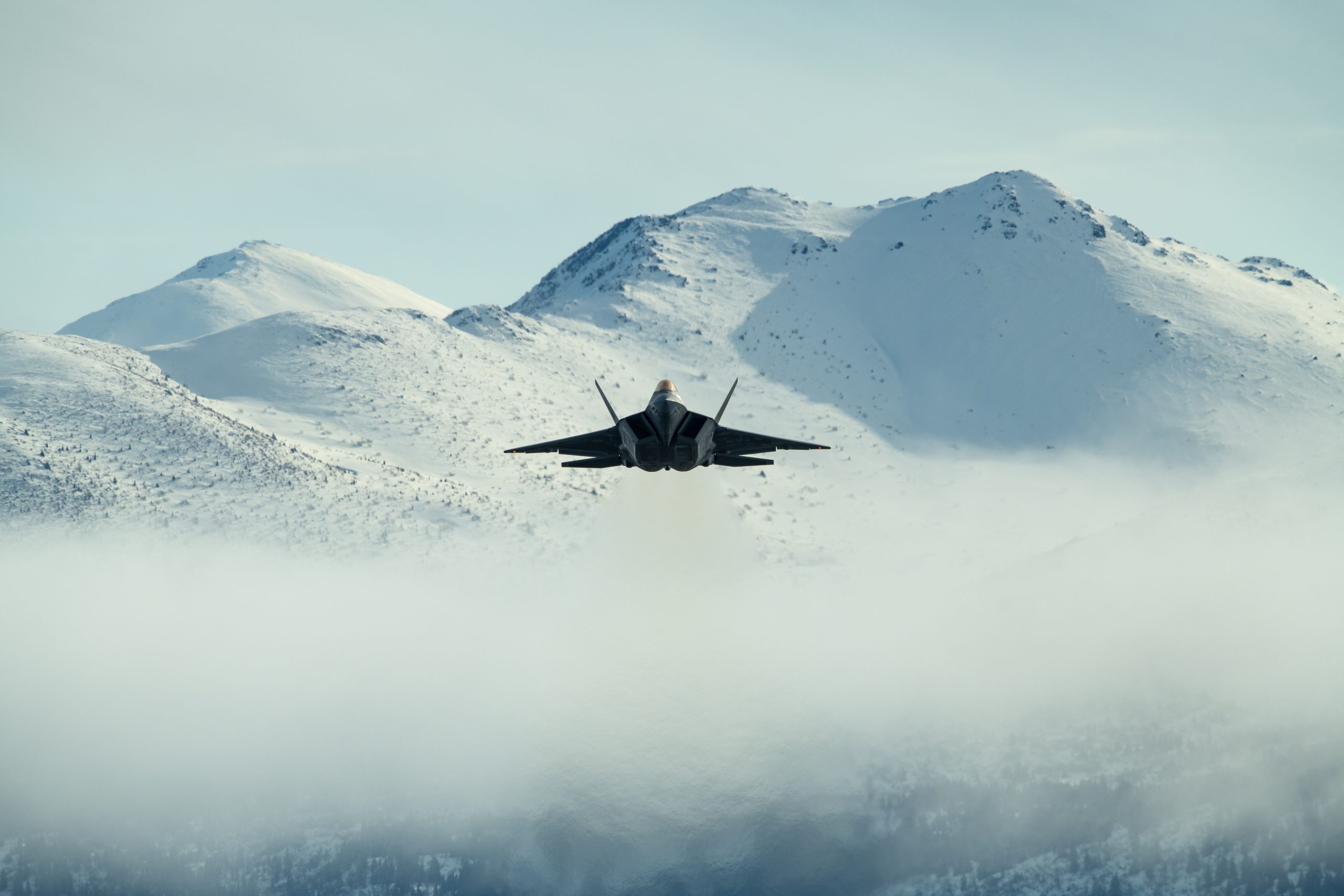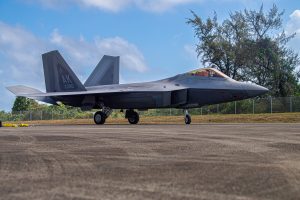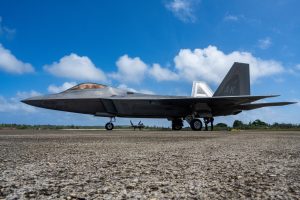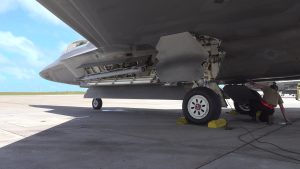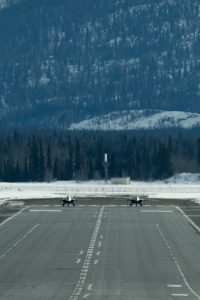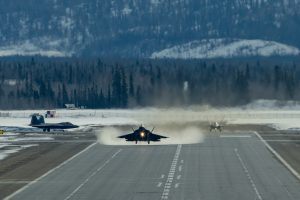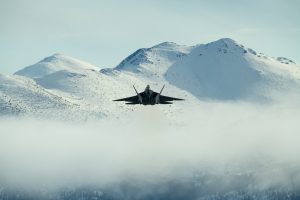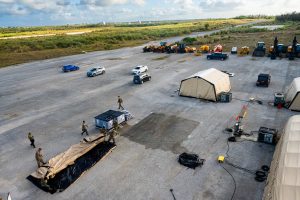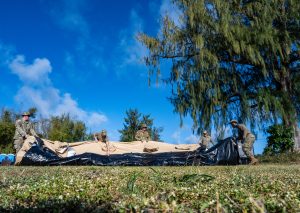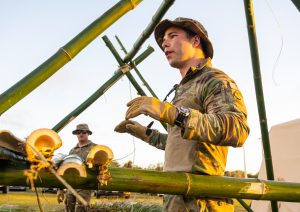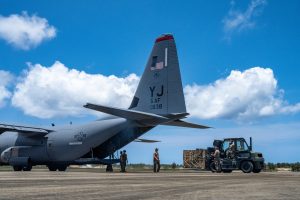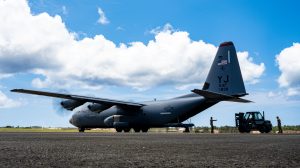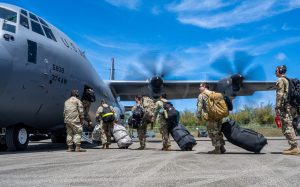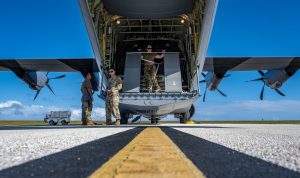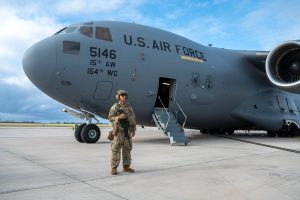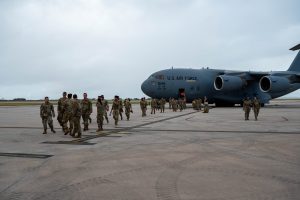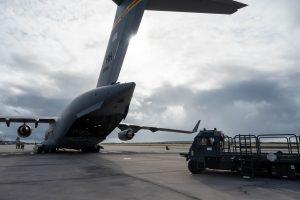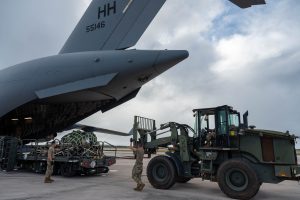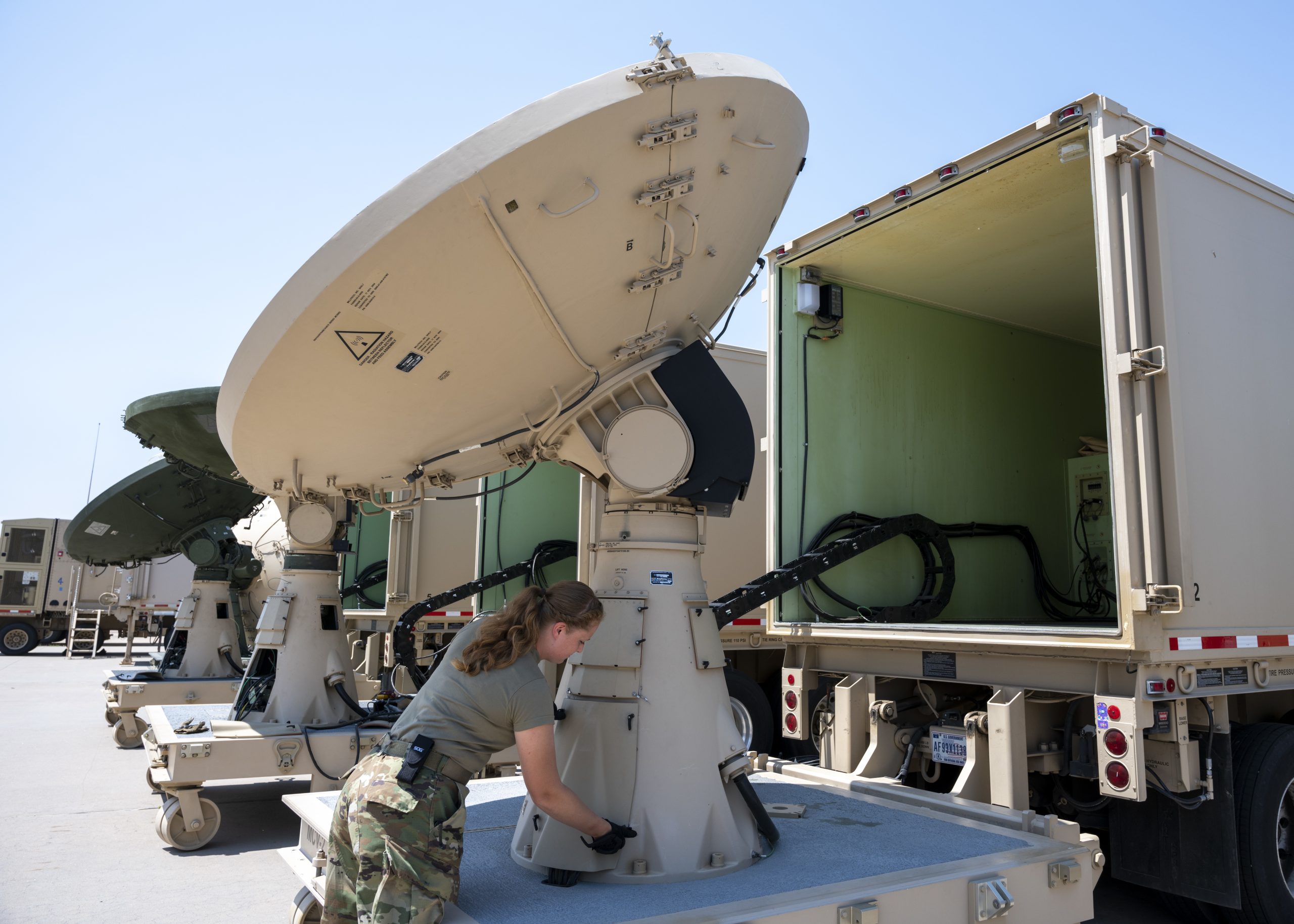Questioned by lawmakers on the state of the Air Force’s maintenance depots, Vice Chief of Staff Gen. James C. “Jim” Slife said April 30 that the service is investing in IT and data infrastructure to better sustain new software-intensive platforms—while acknowledging that there is still work to be done to bring the facilities up to modern standards.
“We have a roadmap for depot modernization,” Slife said at a House Armed Services Committee hearing. “We recognize that we need to modernize these. Part of this is the IT systems, making sure we have a heavy investment in the data underpinning that is required for all our sustainment work, but it’s also the basic hardware that goes into the depot.”
The service currently has three Air Logistics Centers:
- Warner Robins ALC at Robins Air Force Base, Ga.
- Ogden ALC at Hill Air Force Base, Utah
- Oklahoma City ALC at Tinker Air Force Base, Okla.
“The Air Force has absolutely no intent of stepping back from any part of the three air depot construct that we currently have right now,” said Slife. “In terms of what the sustainment center is doing to modernize and make sure that our organic depots remain relevant, we’re investing heavily in data science and data application in all of our systems.”
Slife did not specify if the roadmap the Air Force is working from is the 20-year plan announced in 2019 or a more updated version. In late 2021, lawmakers challenged the service to craft a more immediate, detailed five-year plan.
Several months later in mid-2022, the Government Accountability Office released a report detailing challenges across Air Force and Navy depots that directly affect readiness by reducing aircraft availability for operations and training. Problems identified in the report included deteriorating equipment and facility conditions, insufficient supply support, and problems with diminishing manufacturing sources and parts obsolescence.
Amid these challenges, the Air Force also has to upgrade its entire sustainment enterprise to handle new aircraft like the F-35 that many have described as a “flying computer.”
“With respect to specifically Hill, in the Ogden ALC, that is front and center for most of our flight fighter platform,” Slife said. “And most of our fighter platforms, particularly the newer ones, as they come on, are very software intensive. One of the things that we really value about at Hill, is the heavy investment in software engineering that goes on there, and the government architectures that they’re able to support and turn capabilities onto our frontline fighters a whole lot faster than perhaps our adversaries would.”
The 309th Aircraft Maintenance Group at Ogden has more than 2,000 personnel handling damage repair, inspections, technical orders, and other maintenance for F-16s, F-22s, and F-35s—a critical mission for the Air Force’s broader pivot toward great power competition.
Ogden is not the only depot investing in new technology, though. Slife also cited increased use of data science at the Warner Robins ALC, saying it helped reduce down time for the hefty C-5 Galaxy transport aircraft.
“For us, one of our problem children was the C-5,” Slife said. “The Warner Robins ALC has decreased the C-5 cycle time going through depot, by over 300 days. Part of the way they were able to do that is very similar to what the Navy is doing, is packaging the work, making sure all the parts are ordered and packaged ahead of time, so that when an airplane comes into the depot, all the parts are there. There are no diminishing manufacturing source issues to worry about, and we’re able to get those airplanes in and out of the depot more quickly.”
Beyond the three main depots, Slife also noted that service maintains “a number of partnerships with commercial depot service providers” across the Indo-Pacific region. These regional facilities mitigate the logistical challenges of transporting aircraft to and from the continental U.S.—and could be increasingly important as the Air Force looks to up its presence in the region in the coming years.
“It gives us the capacity that we need, number one. Number two, for those forward based fighter platforms, it saves us from having to drag them all the way across the Pacific Ocean and back,” Slife said. “Plus, in times of conflict, it provides added companies available to us. So, while we rely most heavily on our organic depot capacity, we do have a global network that we rely on as well.”
